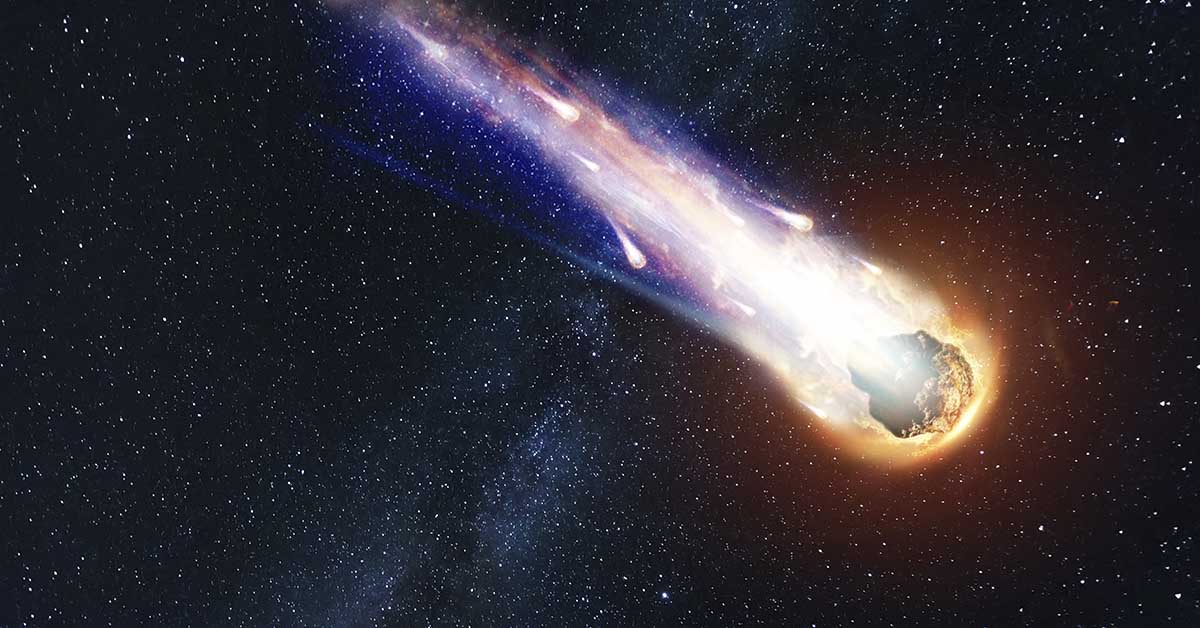Astronomers have recently detected three near-Earth asteroids. All of them had been moving under the Sun’s glare. Two of them are considered planet killers- an asteroid large enough to end human civilization and much of life on earth. The asteroids are located within the orbits of Venus and Earth. So while they are not as distant as we would like them to be, they are still quite difficult to observe due to the harsh glare of the Sun. As it turns out, the brightness of the Sun actually shields the asteroids from any form of telescopic observations.
In order to view the planet killer more clearly astronomers conducted a twilight survey and studied the space rocks using a Dark Energy Camera. The camera was located on the Victor M. Blanco 4-meter Telescope situated at the Cerro Tololo Inter-American Observatory in the South American nation of Chile. The findings from the study were then published in an article in The Astronomical Journal. [1]
One of the planet killers, called 2022 AP7, is around 1.5 km wide. It also has an orbit that could potentially bring itself into Earth’s path in the future. However, it’s hard to know when this would happen because of how long it takes the asteroids to orbit the sun. Essentially, if it does hit the earth, it won’t be any time soon.
The lead author of the study Scott S. Sheppard, an astronomer at the Earth & Planets Laboratory of the Carnegie Institution for Science in Washington DC, stated, “Our twilight survey is scouring the area within the orbits of Earth and Venus for asteroids. So far we have found two large near-Earth asteroids that are about 1 kilometer across, a size that we call planet killers.”
It is assumed that a planet killer that measures over a kilometer “would have a devastating impact on life as we know it”. Furthermore, pollutants and dust would be filling up the atmosphere for multiple years. This would prevent sunlight from ever reaching the surface of the planet. “It would be a mass extinction event like hasn’t been seen on Earth in millions of years.”
Read: Take a look inside a $3 million doomsday condo that can sustain 75 people for 5 years
How Threatening Are These Planet-Killer Asteroids?
Among the other two, 2021 PH7 and 2021 LJ4, the former is of particular interest to the researchers. 2021 PH7 is currently the closest asteroid to the Sun that we know of. However, both of these asteroids’ orbits are much safer with regard to Earth. However, astronomers use the term ‘near-earth’ to describe comets and asteroids that can come within 30 million miles of Earth at any point in their orbit. Detecting such threats is a focus of NASA as well as other worldwide space organizations. Presently, we do not know of any asteroid that is on a direct crash course with Earth. However, over 27,000 asteroids exist in the “near-Earth” category. [2]
As for the recently discovered planet-killer, 2022 AP7, the asteroid is projected to come close to Jupiter and Mars in the next 145 years. On top of that, according to NASA’s Paul Chodas, the 2022 AP7 is “one of the most distant of the asteroids that we categorize as potentially hazardous.” Furthermore, among the over 27,000 near-earth objects, only 857 are approximately half a mile in width – not nearly large enough to be a planet-killer. [3]
Recently, NASA’s DART mission has proved that our systems are capable of using a spacecraft to push an asteroid enough to alter its path. As such, to properly implement such missions, Chodas explains that “the most important thing […] is to find them and to find them with lots of warning time.” The recent surveys being conducted during twilight using instruments such as the Dark Energy Camera is expected to produce much more fruitful efforts toward such discoveries and warnings.
Keep Reading: NASA: Asteroid Could Still Hit Earth in 2068
Sources
- “‘Planet killer’ asteroid has just been found hidden in the sun’s glare.” Unilad. Aisha Nozari. November 1, 2022.
- “‘Planet killer’ asteroids nearly a mile long detected after being hidden by the sun’s brightness.” USA Today. Scott Gleeson and Jordan Mendoza. November 1, 2022.
- “‘Planet killer’ asteroid spotted hiding in the sun’s glare.” CNN. Ashley Strickland. October 31, 2022.

